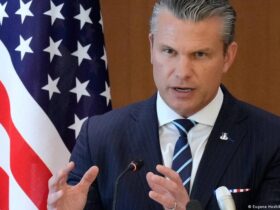The Under-17 Men’s World Cup is usually the time when football scouts and keen fans are on the lookout for the next Lionel Messi – but the 2025 edition has taken on greater importance.
The tournament has become FIFA’s testing ground for the 48-team format that will feature at the 2026 World Cup in the United States, Canada and Mexico. It is also the beginning of the annual cycle of these under-17 tournaments, and the first of five consecutive tournaments to be played in Qatar.
FIFA expert and former player Pascal Zuberbühler says this is “the beginning of a new global rhythm in football” and that he can “feel the pulse of something special emerging.” While there is undoubtedly some exaggeration in those comments, it is undeniable that the global football calendar is entering another new phase.
As with any change, there come questions. In the case of this tournament, the management of the load of teenagers, some of whom may now play in World Cup tournaments annually for several years, comes into focus, as well as the importance of Qatar now becoming the permanent host for the next half decade.
Demanding schedule increases risk of injury
There are many risks for kids competing at a high level and 17-year-olds are no different.
“If players reach the finals they could potentially play eight matches within about three and a half weeks, approximately one every three to four days. Even as a single event, that represents a challenging schedule for developing players, especially when recovery opportunities are limited,” Sean Williams, who works at the University of Bath in England and specializes in sports injury prevention, load management, and development and maturation, told DW.
There is also the matter of managing the wide range of fitness and training levels that go into this tournament.
“Players from elite football nations such as Germany, England and Italy typically arrive with very high cumulative loads from year-round academy training, domestic youth leagues and international fixtures. Although they benefit from sophisticated strength and conditioning support and experienced medical staff, many may already suffer from accumulated fatigue,” Williams said, acknowledging that some progress has been made here.
However, players from emerging nations, many of whom would not have qualified under the previous 24-team format, will likely arrive with much lower training loads and fewer high-intensity matches in their bodies.
Williams said, “For them, this represents a sudden increase in tournament demands. Although the relationship between load changes and injury risk remains complex and debated, a rapid increase in training or match exposure is generally considered a cause for concern, especially in athletes who are not accustomed to such demands.”
“These teams have less sophisticated systems for monitoring and managing load, and often have limited experience with additional stressors such as long-distance travel and competing in the heat of Qatar.”
All of these factors increase the risk of injury, Williams said. Regardless of their origins, he believes there are some specific challenges in working with this age group.
“Some apophyseal sites [locations on the skeleton where a growth plate (apophysis) serves as an attachment point for muscles, tendons, and ligaments]Not yet fully ossified, especially around the pelvis [turned to bone]This makes them vulnerable during rapid increases in load.”
What does this tournament mean for Qatar’s heritage?
Then there is the matter of Qatar hosting the tournament permanently for the next five years (Morocco is also hosting the women’s under-17 tournament in the same time frame).
The Gulf state has a recent history of hosting major sporting championships, the most famous of which is the 2022 World Cup. But it’s not just Qatar. Saudi Arabia’s Public Investment Fund is already an official partner of the Club World Cup and the country is set to host the 2027 Asian Cup and 2034 World Cup, playing a central role in the development of Middle East football.
Kamila Swart-Aries is an expert in sports, tourism and event management and professor at Hamad Bin Khalifa University in Doha. For him, the Under-17 World Cup is “about Qatar establishing itself as a world-class sporting destination.”
“In the context of where Qatar is now, bidding for 2036 [Olympics] should not be viewed in isolation,” Swart-Aries told DW. “Their strategy is about building a track record over the years since the 2006 Asian Games and all the World Championships since then. It’s about maximizing the facilities and creating a legacy of creating opportunities and interest for young people.”
Swart-Aries does not believe Qatar intends to change the narrative surrounding the 2022 World Cup with the tournament, which has drawn widespread criticism for the alleged deaths of thousands of migrant workers building stadiums and the country’s poor record on issues such as LGBTQ+ rights.
However, it is widely acknowledged in global criticism that some changes have been made to labor laws. There is also no doubt that the elite players coming to the tour will leave with a positive impression, Swart-Aries said.
“Given that context, I think [the U-17 footballers] People who come here will have a wonderful experience, and for those who have different beliefs [about Qatar]”Just being here will change that,” he said.
Then there is also the option of hosting the tournament at Aspire Academy, Qatar’s premier sports academy. Only the final is being held in a stadium.
“It’s smaller scale, and Aspire lends itself to these types of tournaments. They can say, ‘We can do this and we can do it well, and we can learn from all the other events we’ve hosted, including the 2022 World Cup,'” Swart-Aries said. “You get a one-day pass, and it’s also a fun event for families. “It is also about showing that Qatar is a family-friendly tourism destination.”
Edited by: Matt Pearson






Leave a Reply